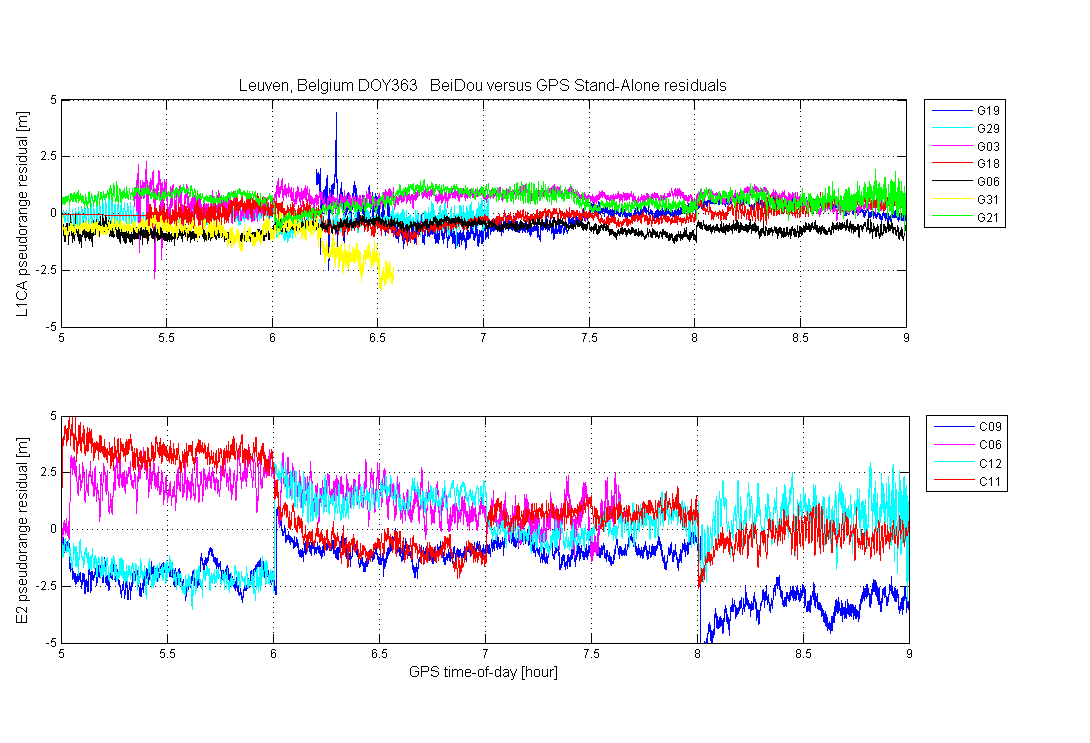Within weeks of a bilateral working group’s recommendation for a common civil GNSS signal design, the European Galileo and U.S. GPS programs have filed draft interface specifications (IS) or interface control documents (ICDs) for the new signals planned for the L1 frequency (around 1575 MHZ).
Within weeks of a bilateral working group’s recommendation for a common civil GNSS signal design, the European Galileo and U.S. GPS programs have filed draft interface specifications (IS) or interface control documents (ICDs) for the new signals planned for the L1 frequency (around 1575 MHZ).
The common design recommended by a technical working group set up under the 2004 US/EU agreement on GPS and Galileo is a multiplexed binary offset carrier (MBOC) signal, which is discussed in detail in the “Working Papers” column that begin on page 57 in this issue of Inside GNSS.
The working group recommendation and a joint statement, signed by the heads of the EU and U.S. delegations, can be found on the NAVSTAR GPS Joint Program Office (JPO) website as well as the Galileo Joint Undertaking (GJU) website.
On April 19 2006, they issued a draft IS-GPS-800 for the so-called L1C signal proposed as part of the GPS III program still under development. The document marks the culmination of a yearslong civil/military effort.
The L1C signal will use a BOC modulation and consists of two main components: a pilot signal without any data message, which is spread by a ranging code, and a carrier that is spread by a ranging code and modulated by a data message.
Galileo ICD Released. The long-awaited Galileo signal in space (SIS) ICD was posted May 23 on the Galileo Joint Undertaking (GJU) website. The ICD covers the Galileo signals and services that will be transmitted at E1, E5, and E6 frequencies. In particular, it contains the spreading codes and navigation message format for the signals, which have not previously been publicly available and are needed by GNSS receiver designers and manufacturers in order to build Galileo-capable receivers.
Under the 2004 agreement, a BOC (1,1) modulation (denoting a subcarrier frequency and spreading code chipping rates both at 1.023 MHz) represents the baseline design for a common signal. However, the MBOC would interweave (or multiplex) BOC (6,1) and BOC (1,1) modulations, which would provide superior performance, according to its advocates, particularly in dealing with multipath (reflected signals) and code tracking in noisy RF conditions.
MBOC Doubters. Despite the enthusiastic unanimous endorsement of the MBOC design by technical experts on the US/EU working group, others are not so sure — suggesting that MBOC will benefit applications requiring high- precision GNSS equipment to the disadvantage of consumers using low-cost GNSS receivers.
Receiver manufacturers of mass-market receivers use a narrower portion of the spread spectrum signal to reduce the costs of the equipment. They argue that, even though an MBOC signal could be received and processed on a BOC (1,1) receiver, the multiplexed signal will deliver between 0.5 and 1 decibel lower effective received power as well as lower effective signal bandwidth.
That arguably could raise difficulties for manufacturers and users who hope to employ high-sensitivity, but low-cost receivers, indoors or in other challenging environments. Qualcomm is among the skeptics of the multiplexed L1 design. The European Space Agency also reportedly would prefer to remain with the original BOC (1,1) design.
EU and U.S. officials are currently assessing the “relevant programmatic aspects of implementing the joint-optimization” as MBOC or BOC (1,1).
Copyright 2006 Gibbons Media and Research LLC





